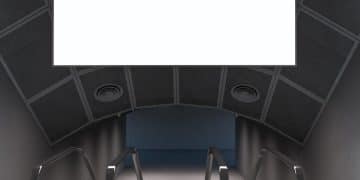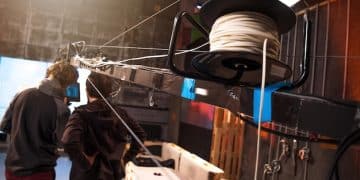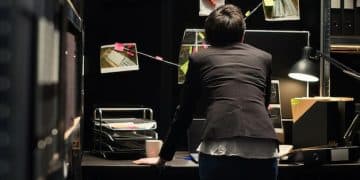The Art of the Cameo: 5 Memorable Movie Appearances
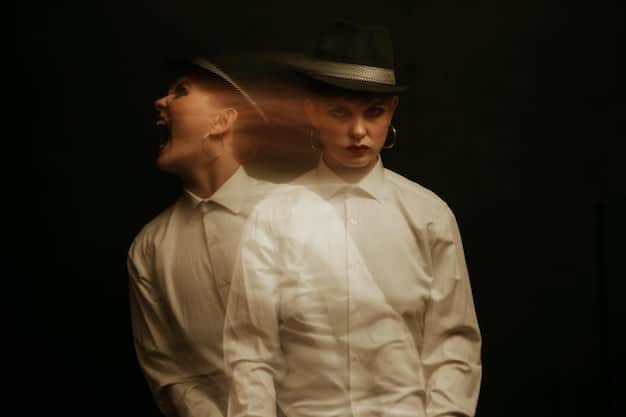
The Art of the Cameo: 5 Unforgettable Movie Appearances explores brief yet impactful actor appearances, often featuring famous figures in unexpected roles, adding a special layer of charm and intrigue to films.
Movie cameos are more than just brief appearances; they’re delightful surprises that can elevate a film from good to unforgettable. The The Art of the Cameo: 5 Unforgettable Movie Appearances stands as a testament to the creative ways filmmakers use these moments to add humor, pay homage, or simply give audiences a wink.
Understanding the Allure of Cameo Appearances
Cameo appearances hold a unique appeal in the world of cinema. They’re the unexpected guests at a movie party, creating buzz and excitement.
A well-executed cameo can serve multiple purposes, from providing a comedic interlude to offering a subtle nod to film history. They are a testament to the creativity and playfulness that can exist within the filmmaking process.
What Makes a Cameo Truly Memorable?
Several factors contribute to the impact and memorability of a cameo. The surprise factor is key – the more unexpected the appearance, the greater the delight.
The role itself also matters. A cameo that plays against type or references the actor’s own persona can be particularly effective.
- Surprise Element: The unexpected appearance of a familiar face.
- Relevance to the Story: How well the cameo fits into the film’s narrative.
- Actor’s Persona: Using the actor’s established image or playing against it.
- Humor and Wit: The cameo’s ability to generate laughter or amusement.
Ultimately, a great cameo is one that lingers in the audience’s memory long after the credits roll.
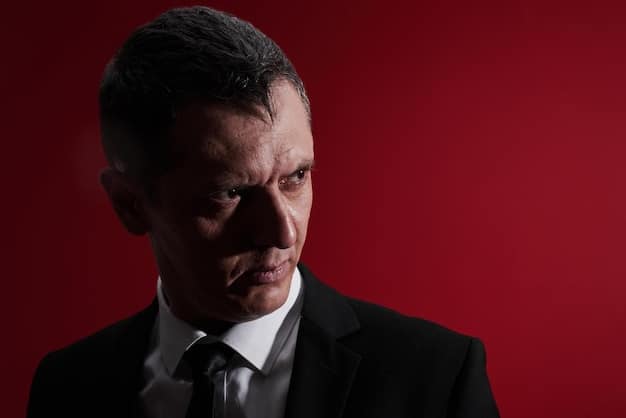
Alfred Hitchcock in “Psycho” (1960)
Alfred Hitchcock, the master of suspense, was also a master of the cameo. His brief appearances in his own films became a signature, a little ‘Easter egg’ for audiences to spot.
His cameo in “Psycho” is one of his most iconic. It’s a fleeting moment, but it adds to the film’s overall sense of unease and intrigue.
A Subtle Appearance
Hitchcock can be seen early in the film, walking past Marion Crane’s workplace. He’s a background character, barely noticeable, yet his presence is undeniable.
This subtle approach is typical of Hitchcock’s cameos. He never steals the scene, but he always leaves his mark.
- Early in the Film: His appearance sets the stage for the suspense to come.
- Non-Speaking Role: He blends into the background, observing the scene.
- Directorial Signature: It reinforces the film’s authorship and Hitchcock’s control.
Hitchcock’s cameo in “Psycho” is a masterclass in how to make a brief appearance memorable and meaningful.
Stan Lee in Marvel Cinematic Universe Films (2000s-2010s)
Stan Lee, the legendary creator of Marvel Comics, became a beloved cameo fixture in the Marvel Cinematic Universe (MCU). His appearances were always a highlight for fans, a way to honor his contributions.
Each cameo was unique, often humorous, and always a reminder of the creative force behind these iconic characters.
Excelsior!
From his role as a hot dog vendor in “X-Men” to a security guard in “Captain Marvel,” Lee’s cameos were diverse and playful. He embraced the opportunity to connect with fans on the big screen.
His appearances became a tradition, a moment of shared joy and recognition for comic book lovers.
- Diverse Roles: He played a variety of characters in different settings.
- Humorous Interactions: His cameos often included comedic moments.
- Fan Appreciation: His appearances were a tribute to his fans and creations.
Stan Lee’s cameos in the MCU are a testament to his lasting legacy and the power of comic book storytelling.
Bill Murray in “Zombieland” (2009)
Bill Murray’s cameo in “Zombieland” is arguably one of the most hilarious and unexpected in recent memory. He plays himself, living in a meticulously crafted zombie-proof mansion.
The scene is a brilliant blend of self-deprecation and comedic genius, showcasing Murray’s willingness to poke fun at his own celebrity.
A Zombie Makeover
Murray’s character disguises himself as a zombie to move safely through the undead-infested world. This leads to a series of absurd and unforgettable moments.
The scene culminates in a hilarious game of catch with Jesse Eisenberg’s character, which ends in disaster, solidifying this cameo as a comedic masterpiece.
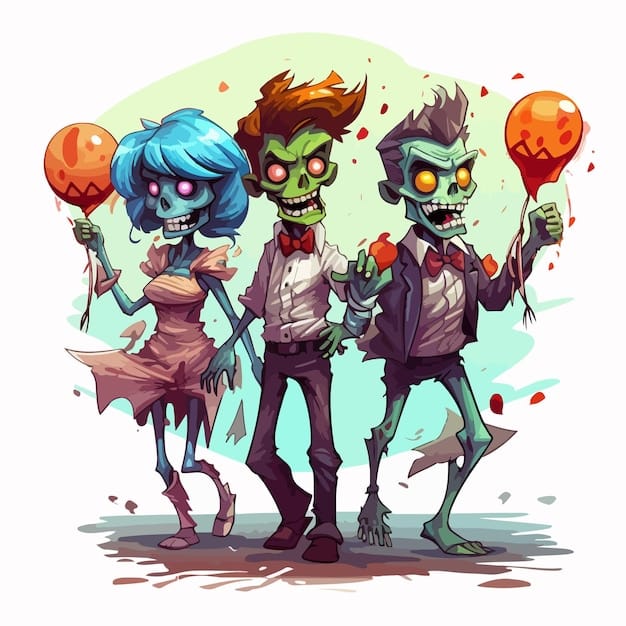
- Self-Deprecation: Murray is willing to make fun of himself and his celebrity.
- Comedic Timing: His delivery and reactions are perfectly timed for maximum humor.
- Unexpected Death: The sudden and accidental demise of Murray’s character adds to the comedic shock.
Bill Murray’s cameo in “Zombieland” is a perfect example of how a celebrity appearance can elevate a film’s comedic value.
Neil Patrick Harris in “Harold & Kumar Go to White Castle” (2004)
Neil Patrick Harris’s cameo in “Harold & Kumar Go to White Castle” reinvented his public image. Known primarily for his role as Doogie Howser, M.D., Harris embraced a wild and exaggerated version of himself.
His appearance is irreverent, hilarious, and completely unexpected, turning him into a comedic icon for a new generation.
A Wild Ride
Harris portrays a drug-fueled, womanizing version of himself, providing Harold and Kumar with a ride and offering questionable advice. The contrast with his family-friendly image is what makes the cameo so brilliant.
His willingness to embrace this outrageous persona solidified his status as a comedic force.
- Image Reversal: He plays against his clean-cut image from Doogie Howser.
- Over-the-Top Performance: His portrayal is exaggerated and outrageous.
- Impact on Career: The cameo helped redefine his career and open doors to new comedic roles.
Neil Patrick Harris’s cameo in “Harold & Kumar Go to White Castle” is a prime example of how a celebrity can use a cameo to completely transform their public perception.
Samuel L. Jackson in “Coming to America” (1988)
Before he was Mace Windu or Nick Fury, Samuel L. Jackson had a very brief, but memorable, cameo in “Coming to America.” It highlights his early career and the serendipitous nature of small roles leading to bigger opportunities.
Jackson appears as a holdup man robbing McDowell’s, the knock-off McDonald’s. This early glimpse of his talent foreshadowed the iconic roles that would define his career.
Early Career Highlight
His appearance is fleeting, but his intensity and presence are undeniable, even in such a minor role. It provides a fascinating glimpse into Jackson’s early work.
The intensity and conviction he brought to even the smallest roles set the stage for his future success.
- Early Role Indicator: It showcases his talent and intensity even in a small part.
- Career Trajectory: The appearance foreshadows his future iconic roles.
- Significance of Small Beginnings: It highlights the importance of even minor roles in building a career.
Samuel L. Jackson’s cameo in “Coming to America” is a reminder that even the briefest of appearances can be a stepping stone to greatness.
| Key Element | Brief Description |
|---|---|
| 🎬 Hitchcock’s “Psycho” | Brief, early appearance, reinforcing directorial control. |
| 🦸♂️ Stan Lee in MCU | Humorous roles honoring his contributions. |
| 🧟 Bill Murray in “Zombieland” | Self-deprecating and hilariously unexpected. |
| 🌟 NPH in “Harold & Kumar” | Image-redefining and outrageously funny. |
Frequently Asked Questions
▼
A cameo is a brief appearance of a well-known person in a film, often uncredited. These can include actors, directors, musicians, or even public figures, adding a surprise element for the audience.
▼
Cameos serve multiple purposes, such as adding humor, paying homage to influential figures, creating buzz, or even breaking the fourth wall. They can also be a fun incentive for audiences to watch and re-watch a movie.
▼
A successful cameo is unexpected, relevant to the story (or intentionally irrelevant for comedic effect), and well-performed. It often leverages the actor’s persona or subverts it in a surprising way.
▼
Yes, cameos vary. Some are silent background roles, while others involve speaking parts or even significant plot contributions. The best cameos leverage the celebrity’s pre-existing fame for maximum impact.
▼
Cameos can enhance the viewing experience by creating a sense of surprise and delight. They reward attentive viewers and generate discussion, often becoming iconic moments that are frequently referenced and celebrated.
Conclusion
The art of the cameo is a testament to the creativity and playfulness that can exist within the world of filmmaking. From Hitchcock’s subtle self-insertions to Murray’s comedic genius, these brief appearances offer a unique and often unforgettable cinematic experience, reminding audiences that sometimes, the best moments come in the smallest packages.
